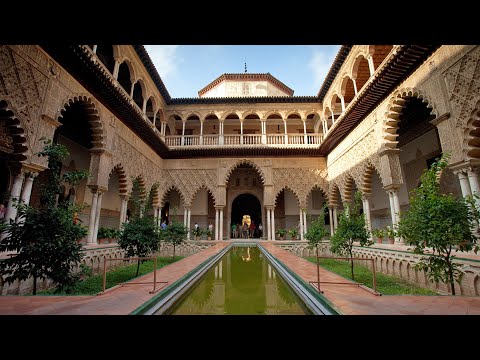
Seville, or Sevilla as it is known in Spanish, is the enchanting capital of Spain’s southern Andalusia region. Famed for its rich history, vibrant culture, and its significant role in the story of Spain’s past, this city offers a compelling blend of old-world charm and modern vibrancy. From its narrow medieval lanes to the grandeur of its historic monuments, Seville is not just a city to visit but an experience to immerse oneself in.
### Historical Legacy
Seville’s history is a fascinating tapestry woven with diverse threads. Founded by the Romans and later ruled by the Moors for over 500 years until 1248 when it was reconquered by Ferdinand III of Castile. Each civilization has left an indelible mark on the city’s architecture and culture. The Gothic grandeur of Seville Cathedral stands testament to this rich historical legacy. As the largest Gothic church in the world, it houses Christopher Columbus’s tomb and boasts a towering Giralda bell tower—an emblematic symbol of the city.
Adjacent to the cathedral lies the Alcázar of Seville. Originally developed as a fort for Muslim rulers, this royal palace astounds with its intricate mudejar architecture—an artistic fusion of Muslim and Christian design elements that emerged in Spain post-Reconquista.
### Cultural Vibrancy
Seville is often considered the birthplace of Flamenco dancing and music, both Intangible Cultural Heritages as per UNESCO. The soul-stirring dances and rhythms can be best experienced at one of many “tablaos” (flamenco bars) throughout the city. For those interested in understanding more about this passionate art form, Museo del Baile Flamenco offers insights into its history and evolution.
The city’s culture also thrives during its colorful festivals—most notably Semana Santa (Holy Week) and Feria de Abril (April Fair). Semana Santa is marked by solemn processions depicting scenes from Christian Passion narratives accompanied by hooded penitents; whereas Feria de Abril sees Seville burst into life with traditional dance, music, food, and horseback riding.
### Culinary Delights
Tapas are synonymous with Spanish cuisine but are particularly entrenched within Sevillian culture. The act called “tapear” – going from bar to bar enjoying small dishes – is an intrinsic part of local social life. Seville offers everything from classic bars serving age-old recipes like ‘espinacas con garbanzos’ (spinach with chickpeas) or ‘jamón Ibérico’ (Iberian ham), to innovative kitchens that give these traditional dishes contemporary twists.
### Modern Allure
Despite its deep historical roots, Seville does not shy away from modernity. Innovative structures such as Metropol Parasol (locally dubbed Las Setas due to its mushroom-like appearance), designed by German architect Jürgen Mayer-Hermann highlight contemporary influences while providing panoramic views over old town district.
### Conclusion
Sevilla manages to maintain a perfect balance between preservation of historical heritage and embracing modernity—a rarity that makes it stand out among European cities. Its atmospheric streets lined with orange trees are more than just pathways through urban sprawl; they are corridors transporting one across different eras—a journey through time itself witnessed through architectural marvels interspersed with lively cultural spectacles making Sevilla truly mesmerizing.
For any traveler looking to explore Europe beyond typical tourist hubs while seeking a profoundly authentic cultural experience—Sevilla beckons.
